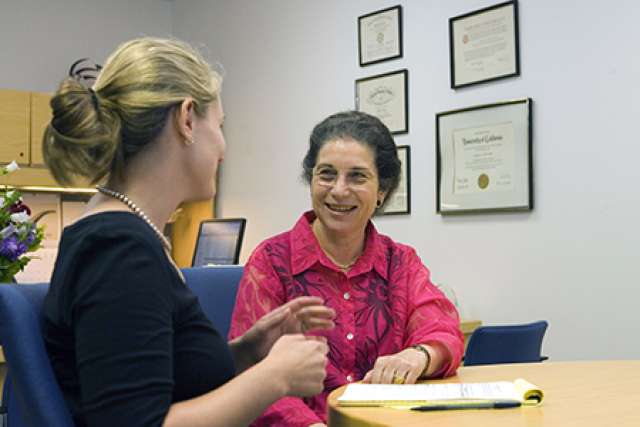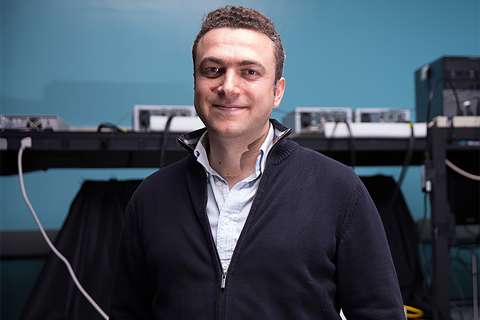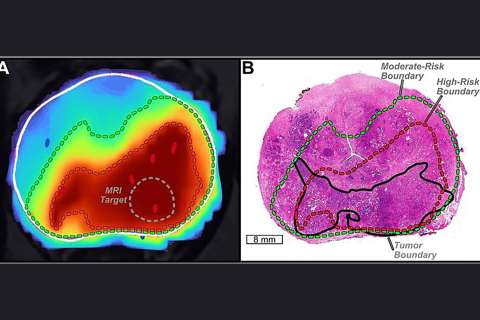Far too often, cancer patients and their doctors aren't aware of all the side effects that accompany new cancer therapies. Some of these new medications might cause fatigue, muscle aches, general pain and discomfort. A lack of information can lead to patients being unprepared to manage their symptoms or even cause some to delay or stop treatment all together. Historically, many clinical trials did not have a method to analyze or widely report the patient's experience while undergoing a therapy.
Researchers at UCLA and across the country are trying to change that. To help people in making better-informed treatment decisions, these researchers are studying better ways to describe the patient experience while receiving cancer treatments. The goal is to provide more accurate information about the degree to which a drug can cause side effects. This information is collected by including the patient's own assessment of their experience.
The research, which is supported with a $3.4 million grant from the National Cancer Institute, will develop improved ways to describe the results of clinical treatment trials where both expert and patient reports have been collected. This research is being funded by NCI's Cancer Moonshot to accelerate cancer research. It will allow four independent research groups to collaborate after they do their own independent projects.
Dr. Patricia Ganz, director of cancer prevention and control research at the UCLA Jonsson Comprehensive Cancer Center, is co-leading one of the four sites in this new national study with André Rogatko, director of the biostatistics and bioinformatics research center at Cedars-Sinai Medical Center. These investigators will develop new methods using data already collected in several breast and colorectal cancer trials, and then apply these techniques to understand the patient outcomes in several ongoing immunotherapy trials.
Ganz answered questions about this research and how it could change treatment in the future.
Why is it important to include a patient's voice in the development of a new cancer treatment?
Historically, the approval of new cancer therapies has relied on the evaluation of treatment side effects by clinicians conducting treatment trials. In addition, most scientific reports only focus on the most serious side effects of a new treatment. However, some side effects, such as fatigue or pain might not be accurately reported by a physician, and even if mild, may be very troublesome to patients.
Increasingly, clinical trials have included the collection of information from the patient's own experience using questionnaires. This research program recognizes the importance of accounting for the patient experience so that when a treatment receives final approval from the Food and Drug Administration, and is marketed, physicians and patients can know what to expect when the new treatment is prescribed.
During the past decade, the FDA has taken a greater interest in the inclusion of the patient experience in clinical cancer treatment trials as part of the approval process so that future patients will know what to expect.
Right now the toxicity of a therapy tells us if someone was hospitalized or had a heart attack or if they died. By incorporating more patient feedback into clinical trials, we will be able to find out, for example, if they experienced persistent fatigue, neuropathy, numbness or tingling in hands/feet, or intolerable pain throughout their treatment, even though hospitalization was never required.
Is patient feedback being taken into consideration when treatments are prescribed?
It should be. The patient is going to be making the decision if they want the therapy, or if they are going to take other treatments that may have different side effects. Many of these therapies are being prescribed for people with advanced disease, where they have to think about if they want to spend their time dealing with the toxicity of a therapy.
Some cancer treatments that have been approved may only extend survival by a month or two. So the issue becomes, what is the human cost? If a patient is very ill, then we may make things worse if the therapy adds substantial bothersome side effects to their existing situation. Even for treatments that may be curative, patients should be warned about persistent problems that continue after treatment ends, such as neuropathy or pain.
If a patient is experiencing adverse side effects from a cancer therapy, what advice would you give to them and to their doctor?
They need to voice what they are experiencing. In some cases, patients don't want to report side effects because they want to continue to take the therapy. Doctors need to tell patients about the risks and benefits of a therapy and assess their preferences. If the patient doesn't know what to expect and the doctor can't describe it, it could be that there isn't enough information. The dissemination and accumulation of information may be limited.
How is patient feedback analyzed as part of this new study?
There is a consortium of four cancer centers participating in the research program. We are each introducing new methods for looking at toxicity and describing it, including user-friendly ways. We will be sharing our datasets and looking at this together and the goal is to develop a new methodology that will go to the FDA and other stakeholders to say this is a better way to look at toxicity.
What is the long-term possible significance of this study?
Across the consortium, organizations conducting clinical trials and the FDA will improve upon how they report their clinical trial data. The FDA may require the inclusion of some of these measurement systems of patient-reported outcomes and also look at analytic strategies for reviewing data in the future. The study also requires improved graphical presentations of the clinical trial data to make it easier for doctors and patients to review the results.
What has been your proudest accomplishment so far in your work?
When I look back at my career, really being patient centered has been the most important part. The patients have always been the inspiration for my research. There is a symbiotic relationship between seeing patients and hearing their stories and knowing that research is needed that can help them. Thinking about the power of the patient's voice and then doing something about it is my focus.




